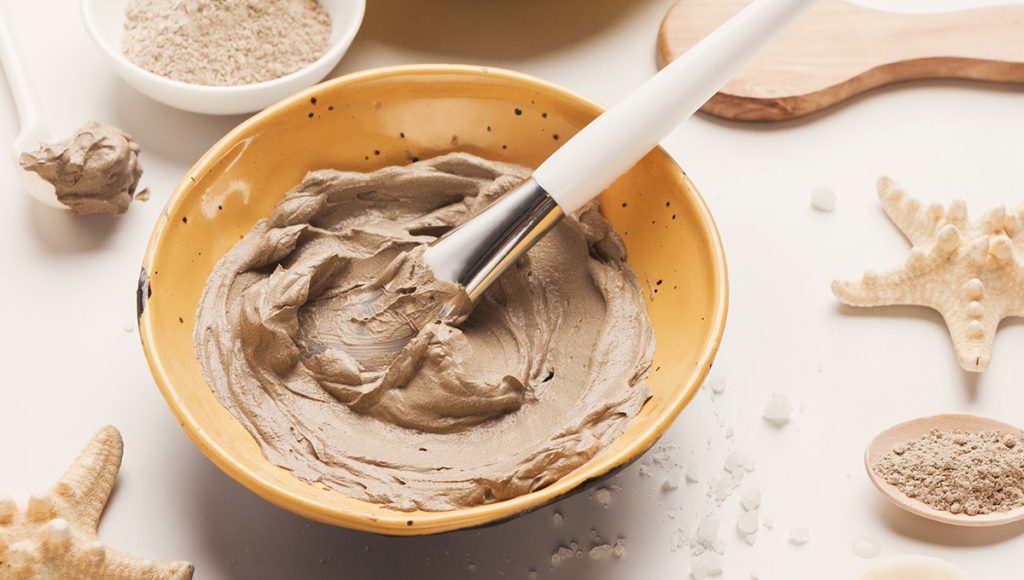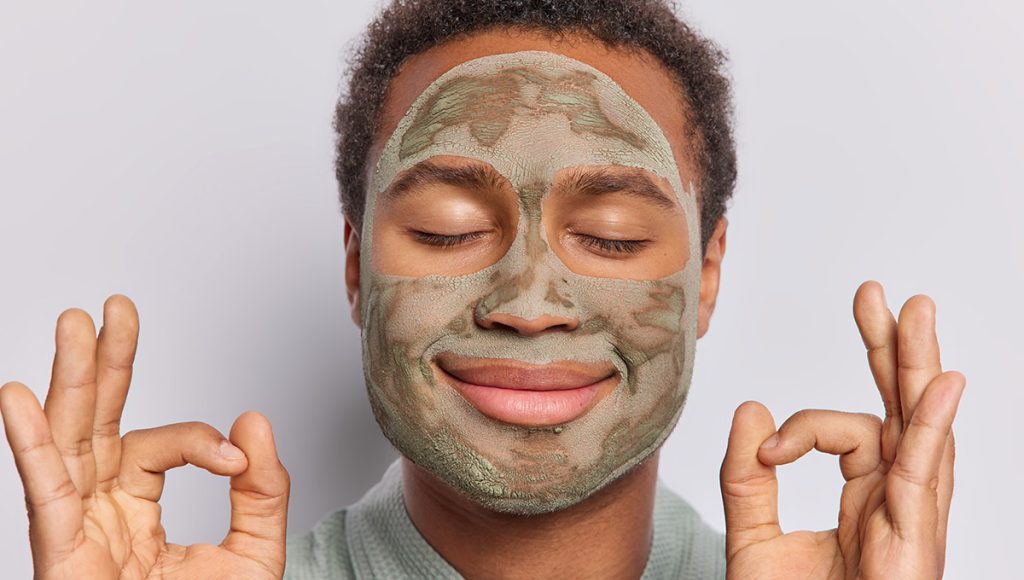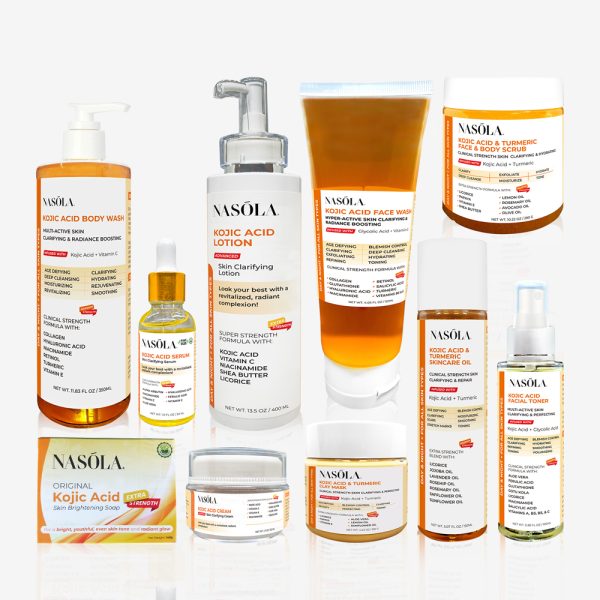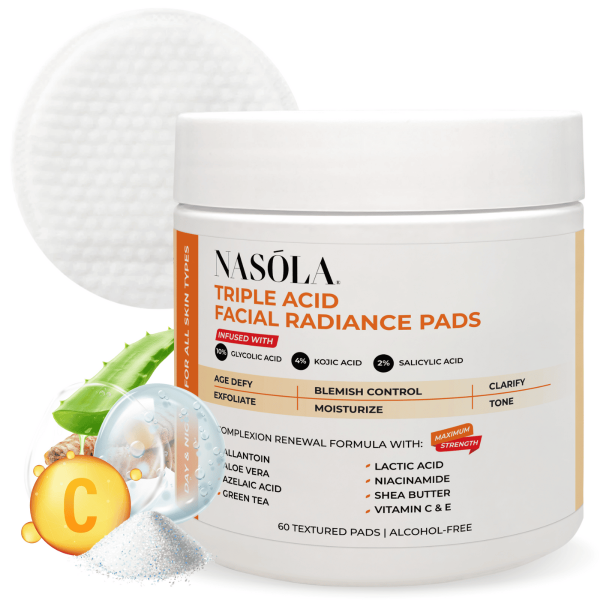Clay masks are like that friend who tells it like it is — no sugar-coating. You either love ‘em or you’ve had one bad experience and decided they weren’t for you. I get it.
You put one on, lose track of time and next thing you know, your face feels like a cracked desert. That classic question sneaks up every time: how long to leave clay mask on?
Too little, and it feels wasted. Too long, and say hello to the Sahara cheeks. And honestly, there’s a sweet spot that most people miss.
So let’s break this obsession with “the longer, the better” — trust me, it’s not a badge of honor to peel your skin off with your clay mask.
I’ve seen glowing transformations — with smarter, not longer, mask usage. Stick with me and I’ll show you exactly how to get the best out of your clay masks (and yes, I’m looking at you, radiant skin!).
Plus, we’re talking about a few rockstars from Nasola, like their Kojic Acid Turmeric Clay Mask and more!
How Long to Leave Clay Mask On: Does Time Really Matter?

So let’s answer the big one: how long to leave clay mask on before it starts doing more harm than good? Timing isn’t a vague suggestion — it’s your skin’s safety net.
Clay masks are great at soaking up excess oil and impurities, but if you let them sit past their prime, they stop helping and start stealing — specifically, your skin’s moisture.
No matter your skin type, clay masks shouldn’t be left on until they’re bone-dry. That flaking dryness? That’s the clay pulling water out of your skin. Instead, you want to remove your mask when it’s halfway dry — still damp in spots but no longer creamy.
Here’s what you should know:
- Oily skin types can usually handle 10 to 15 minutes.
- Dry or sensitive skin? 5 to 10 minutes, tops.
- Combination skin? Target zones (T-zone, for example) for 10 minutes.
- Avoid wearing the mask until it cracks — that’s when stripping happens.
Why Timing Matters
If you have sensitive or dry skin, leaving your clay mask on for too long can increase irritation, tightness, and flaking. The goal is detox and glow — not dehydration and regret.
Clay draws out both oil and water. When it starts to dry into fine lines or you feel an itch, that’s your sign to rinse. Try setting a timer — yes, really — and remove it the moment it’s partially dry.
That fine-line dryness is NOT your skin healing. It’s your barrier … breaking. Don’t push it.
Bonus hack? Use a damp paper towel to gently swipe it off instead of scrubbing.
General Guidelines by Skin Type
Finding your timing sweet spot depends on your skin type. The general rule of thumb? The drier your skin, the shorter your mask wear time.
Here’s a super simple cheat sheet:
- Oily skin: 10-15 minutes, twice weekly.
- Dry skin: 5-8 minutes, once weekly.
- Combination skin: Spot treat oily areas for 10 minutes.
- Sensitive skin: 5 minutes MAX.
And hey — if you’re prone to redness or you’re trying a new clay formula, patch test before use. Always.
Product Highlight: Kojic Acid Turmeric Clay Mask
Now, this one’s special. The Kojic Acid Turmeric Clay Mask doesn’t just detox — it targets hyperpigmentation and uneven skin tone, thanks to its blend of kojic acid and turmeric.
This mask is ideal for skin that needs brightening without the burn.
Key benefits:
- Kojic acid fades dark spots and discoloration.
- Turmeric calms inflammation and brightens.
- Natural clays draw out gunk and oils.
- It won’t leave your skin Sahara-dry with proper use.
Time it right — about 8–10 minutes for most skin types — and you’ll be glowing faster than your coffee brews.
Benefits of Kojic Acid in Clay Masks

Kojic acid isn’t new — but it’s definitely trending. When layered into clay masks, it goes beyond basic detox. It dives deep into attacking stubborn discoloration and leftover acne marks. And let’s talk glow? It delivers.
Think of it as your skin’s gentle eraser. Used consistently, you’ll notice dark spots fade and dull skin turn radiant. Pairing kojic acid with the right base (like gentle clay) gives your pores room to breathe while handling brightening in one go.
Let’s dive deeper.
Brightening and Pigmentation Control
Kojic acid is naturally derived from fungi—pretty cool, huh? It works by inhibiting tyrosinase, which is the enzyme your skin uses to make melanin. What does that mean? Less melanin = lighter spots, scars, and uneven tone.
And when infused into a gentle clay formula?
Magic ✨
Benefits of kojic acid in clay masks:
- Fades dark spots caused by sun, post-acne, and age.
- Gives skin a clearer, more even-toned appearance.
- Works gradually, so results build beautifully over time.
- Pairs well with calming ingredients like turmeric.
Just don’t expect overnight transformations. Give it a few weeks — you’ll see the difference.
Recommended Use with Total Kojic Experience Set
Honestly, if you’re serious about clarity and tone, level up to the Total Kojic Experience Skincare Set. This isn’t just one product — it’s a system built to fade dark marks, deeply hydrate, and maintain brightness long after the mask is gone.
Here’s why it’s clutch:
- Comes with the clay mask as your weekly treatment.
- Includes cleanser, toner, and moisturizer designed to boost kojic effects.
- Gives you an organized, no-guesswork routine.
- Perfect for people tired of trying random products that don’t sync.
Use the full system — the synergy is chef’s kiss.
How to Avoid Over-Drying Your Skin with Clay Masks
Clay by nature soaks things up (that’s kinda its job). But when it over-soaks, your skin gets tight, flaky, and irritated. To get the good without the bad, you’ve got to protect your moisture barrier — like, fiercely. That’s where hydration boosters come in.
Smart skincare isn’t just about stripping — it’s about replenishing after purification. Look for masks and treatments that include or pair with hydrating ingredients like aloe vera, hyaluronic acid, or natural oils.
Stay prepped, stay moisturized. Your skin will thank you.
The Role of Hydrating Ingredients
You wouldn’t wear a wool sweater without a shirt underneath…right? That’s how using a clay mask without hydration feels for your skin.
When looking at ingredients, seek these hydrating heroes:
- Aloe vera: Soothes and rehydrates freshly purified skin.
- Hyaluronic acid: Binds moisture post-mask.
- Squalane or jojoba oil: Balances oil production while locking in hydration.
- Panthenol (Vitamin B5): Supports barrier relief.
The Kojic Acid Turmeric Clay Mask is a standout here — it’s infused with soothing turmeric and gentle clays — balancing purification with calm.
Hydration isn’t an afterthought. It’s part of the ritual.
Introducing: Triple Acid Facial Radiance Pads
Let’s talk evening exfoliation — minus the irritation.
Try pairing your clay masks with the Triple Acid Facial Radiance Pads on alternate days. These miracle rounds offer:
- Lactic, glycolic, AND mandelic acids for triple exfoliation.
- Skin-brightening results without the sting.
- Hydration support to maintain skin’s bounce.
- Quick application — swipe, and done.
Using these 1–2 times a week between clay mask days keeps your skin smooth and prepped — not stripped.
Exfoliating Before or After Clay Mask: What’s Better?

Quick answer? Before. Always before. Why? Because dead skin cells act like a wall. To let the clay mask do its magic, you need a clean entry. Exfoliating before lets ingredients go deeper and work smarter.
But note: gentle is the name of the game. Avoid harsh scrubs — especially before a clay session. Pads, peels, or enzyme-based exfoliants? Gorgeous choice.
Prepping Skin for Better Absorption
Imagine applying a mask over clogged pores and rough dead skin patches — sounds like a wasted session!
When you exfoliate first:
- Active ingredients from the clay mask penetrate deeper.
- Pore cleansing becomes more effective.
- Skin renews faster after each session.
- You boost brightness and softness in one go.
Gentle AHA-based exfoliants do the trick. No sandpaper scrubs, please!
Just be sure to moisturize after BOTH steps.
Use Lemon Turmeric Exfoliating Pads Before Masking
A real MVP in prepping your skin? The Lemon Turmeric Kojic Acid Exfoliating Pads.
They’re:
- Infused with kojic acid for deep brightening.
- Loaded with turmeric to reduce redness.
- Quick and easy — just swipe and go!
- Perfect to use 10 mins before a clay mask.
These pads are great for weekly use. They give your skin a clean slate before masking — because what’s the point in wearing a $30 clay mask over dead cells?
How to Incorporate Clay Masks into Your Skincare Routine
Timing, frequency, product order… it can feel like skincare overload. But consistency is where the results live. Once you dial in when and how you include clay masks, it becomes second nature. Whether weekly or bi-weekly, clay masks deserve a spot — especially if you’re struggling with blemishes, oil excess, or uneven tone.
Let’s simplify that skincare attack plan!
Weekly vs. Biweekly Usage
Here’s how often you should be masking based on your skin type:
- Dry or sensitive skin: Use once every 10–14 days.
- Oily/acne-prone skin: Masking 1–2x a week is ideal.
- Normal/combination skin: Every 7–10 days is perfect.
Stick to a rhythm and your skin will respond with clarity and balance.
Bonus tip? Mask at night. Let those nutrients work while you sleep.
Layering with Other Products
Here’s how to stack your products like a pro:
- Cleanser – always start clean.
- Exfoliating Pad – e.g., Lemon Turmeric one (before clay mask).
- Clay Mask – like Kojic Acid Turmeric, 5–10 mins.
- Toner – hydrate + rebalance pH.
- Moisturizer – seal in the glow.
Want more consistent results? Use the Total Kojic Experience collection and follow this order. You’ll cut confusion and start seeing real skin wins.
Conclusion
Knowing how long to leave clay mask on might seem like a tiny detail… but it truly makes or breaks your results. Leave it on too long and you risk irritating or over-drying your face. But done right? You unlock detox, brightness, and a whole lot of glow.
The trick? Trust the clock. Stick to a solid masking schedule. Use the right products, like the Kojic Acid Turmeric Clay Mask and support systems like the Total Kojic Experience.
Don’t be afraid to tweak things based on how your skin feels — but anchor your routine around balance. Because consistency paired with quality? That’s the ultimate skincare power move.
You got this.
Frequently Asked Questions
No more than 5–7 minutes. Sensitive skin can easily become irritated, so it’s best to start small and build up if needed. Look for masks with calming ingredients like turmeric or aloe, and always patch test first.
Yes, leaving clay masks on too long can excessively dry out your skin. They continue to absorb moisture even after drying. Removing the mask while it’s still damp in areas prevents stripping the natural skin barrier.
No, clay masks should not be used daily. Most skin types benefit from 1–2 uses weekly. Overuse can disrupt your skin’s natural oils, leading to dryness, irritation, and rebound breakouts.
Rinse with lukewarm water, pat dry, and apply a hydrating toner and moisturizer. Try the Total Kojic Experience set — it soothes, hydrates, and keeps your glow locked in.
Exfoliate before using a clay mask. Removing dead skin allows the mask to work more effectively by helping ingredients absorb deeper. Use the Lemon Turmeric Exfoliating Pads for best pre-mask prep.
Yes! Clay masks are great for oily and acne-prone skin. They absorb excess oil, unclog pores, and reduce inflammation. The Kojic Acid Turmeric Clay Mask targets both active breakouts and leftover marks.
Evenings are best. Your skin gets time to recover overnight and isn’t exposed to pollutants or makeup. Pair it with a calming routine for the best experience.
Remove it when it turns dull, matte, and starts to feel tight — but before it flakes. Touch it. If it feels mostly dry but slightly damp in spots, it’s time.
Hands down, a skincare set. Products like the Total Kojic Experience are formulated to work together, giving you better consistency, fewer reactions, and faster results.
Yes, but follow timing rules. Oily skin: 10–15 mins. Dry/sensitive: 5–7 mins. It’s gentle, but like any treatment, proper usage brings the best results.




